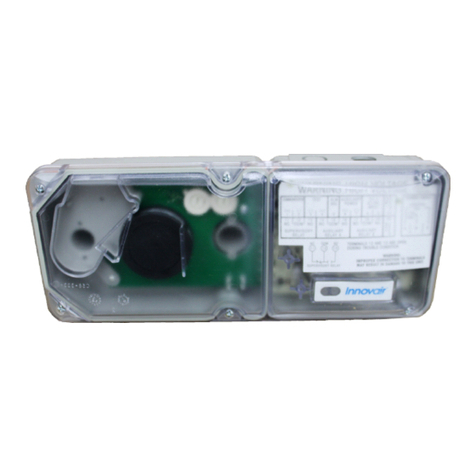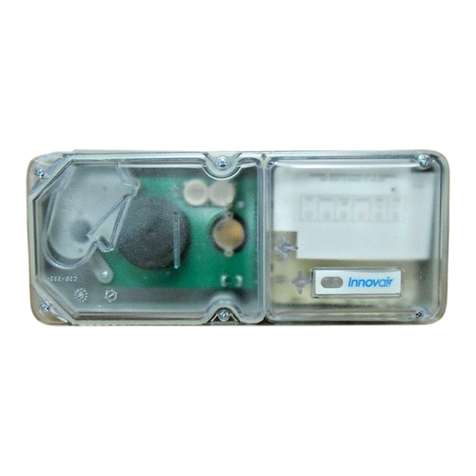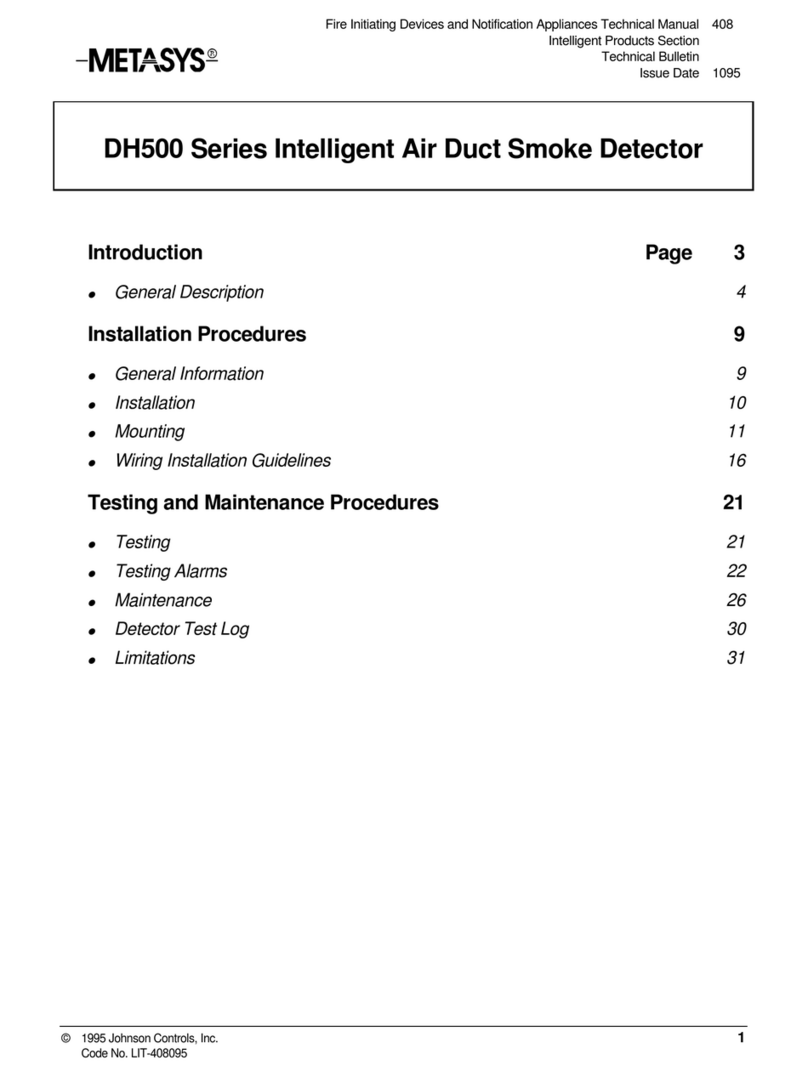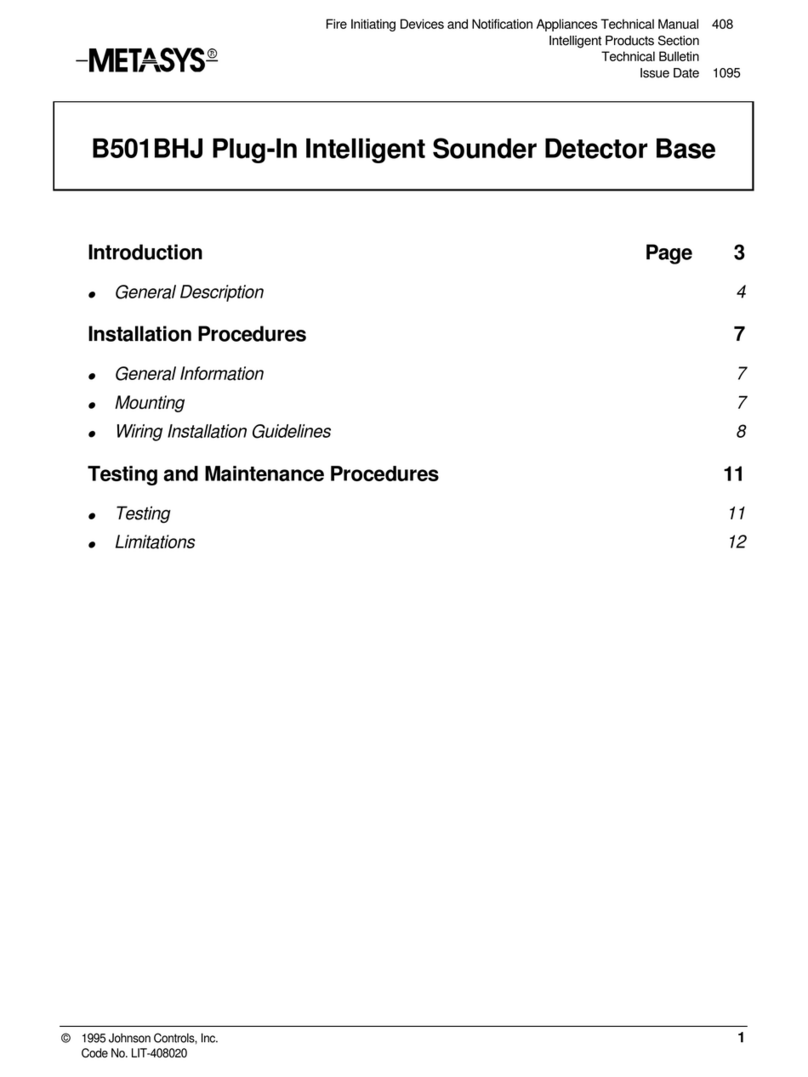
JC-400-005 2 I56-3573-001R
©2009 Johnson Controls
FCC STATEMENT
This device complies with part 15 of the FCC Rules. Operation is subject to the following two conditions: (1) This device may not cause harmful interference, and (2) this device must accept any interference
received, including interference that may cause undesired operation.
NOTE: This equipment has been tested and found to comply with the limits for a Class B digital device, pursuant to Part 15 of the FCC Rules. These limits are designed to provide reasonable protection against
harmful interference in a residential installation. This equipment generates, uses and can radiate radio frequency energy and, if not installed and used in accordance with the instructions, may cause harmful
interference to radio communications. However, there is no guarantee that interference will not occur in a particular installation. If this equipment does cause harmful interference to radio or television reception,
which can be determined by turning the equipment off and on, the user is encouraged to try to correct the interference by one or more of the following measures:
– Reorient or relocate the receiving antenna.
– Increase the separation between the equipment and receiver.
– Connect the equipment into an outlet on a circuit different from that to which the receiver is connected.
– Consult the dealer or an experienced radio/TV technician for help.
A. Functional: Magnet Test (P/N M02-04-01 or M02-09-00)
This sensor can be functionally tested with a test magnet. The test magnet
electronically simulates smoke in the sensing chamber, testing the sensor
electronics and connections to the control panel.
1. Hold the test magnet in the magnet test area as shown.
2. The sensor should alarm the panel.
Two LEDs on the sensor are controlled by the panel to indicate sensor
status. Coded signals, transmitted from the panel, can cause the LEDs
to blink, latch on, or latch off. Refer to the control panel technical docu-
mentation for sensor LED status operation and expected delay to alarm.
B. B. Smoke Entry
The GEMINI model 501 aerosol generator can be used for smoke entry
testing. Set the generator to represent 4%/ft to 5%/ft obscuration as de-
scribed in the GEMINI 501 manual. Using the bowl shaped applicator,
apply aerosol until the panel alarms.
Additionally, canned aerosol simulated smoke (canned smoke agent)
may be used for smoke entry testing of the smoke detector. Tested and
approved aerosol smoke products are:
Manufacturer Model
Home Safeguard Industries 25S
SDi CHEK02 and CHEK06
SDi SOLOA4
SDi SMOKESABRE-01
When used properly, the canned smoke agent will cause the smoke detector
to go into alarm. Refer to the manufacturer’s published instructions for proper
use of the canned smoke agent.
Canned aerosol simulated smoke (canned smoke agent) formulas will vary by
manufacturer. Misuse or overuse of these products may have long term ad-
verse effects on the smoke detector. Consult the canned smoke agent manufac-
turer’s published instructions for any further warnings or caution statements.
C. Remote Test
2951JR can be remotely tested using the RTS451, RTS451KEY, RTS151,or
RTS151KEY test accessories. Refer to the DNR/DNRW manual for wiring
diagrams. Maximum test response time may be up to two communica-
tions from the panel.
A sensor that fails any of these tests should be cleaned as described under
CLEANING, and retested. If the sensor fails after cleaning, it must be re-
placed. When testing is complete, restore the system to normal operation and
notify the proper authorities that the system is back in operation.
FIGURE 3. TEST MAGNET POSITION:
LED TEST MAGNET
POSITION
MAGNET TEST
MARKER
LED
C0145-02
HIGH SENSITIVITY SETTING
(applies to 2951JR)
The use of the 0.2% to 0.5% per foot sensitivity setting requires a 90 day test
period to ensure that the detector’s environment is suitable for this setting.
The following steps must be followed to meet Johnson Controls and UL re-
quirements for this high sensitivity application:
1. Each detector intended for 0.2% to 0.5% per foot alarm application shall
have its initial alarm setting set for 0.5% obscuration per foot alarm level.
The initial pre alarm setting for the detector shall be set to the intended alarm
setting of the system. Pre alarm shall be set for non latching operation.
2. Detectors set at 0.2% to 0.5% per foot are intended for use in smoke-
free, environmentally controlled applications, such as computer rooms
and clean rooms. In order to determine if an environment is suitable for
installation, the detectors shall be operated continuously for 90 days with
all environmental factors, including temperature, humidity, air flow, oc-
cupancy, etc., similar to the intended application for these detectors. An
electronic history file or printer shall be used to record all events associ-
ated with the detectors under testing.
3. At the end of 90 days, the results of the test shall be inspected by an au-
thorized Johnson Controls representative or the end user, if trained by an
authorized Johnson Controls representative. If no alarms or pre alarms
are recorded for the detectors under testing, the system may be set to the
tested pre alarm level in the 0.2% to 0.5% per foot range.
CLEANING
Before removing the detector, notify the proper authorities that the smoke
detector system is undergoing maintenance and will be temporarily out of
service. Disable the zone or system undergoing maintenance to prevent un-
wanted alarms.
1. Remove the sensor to be cleaned from the system.
2. Remove the sensor cover by pressing firmly on each of the four removal
tabs that hold the cover in place.
3. Vacuum the screen carefully without removing it. If further cleaning is
required continue with Step 4, otherwise skip to Step 7.
4. Remove the chamber cover/screen assembly by pulling it straight out.
5. Use a vacuum cleaner or clean, compressed air to remove dust and de-
bris from the sensing chamber.
6. Reinstall the chamber cover/screen assembly by sliding the edge over the
sensing chamber. Turn until it is firmly in place.
7. Replace the cover using the LEDs to align the cover and then gently
pushing it until it locks into place.
9. Reinstall the detector.
10. Test the detector as described in TESTING.
11. Reconnect disabled circuits.
12. Notify the proper authorities that the system is back on line.
FIGURE 4. SENSOR ASSEMBLY:
SENSOR
COVER
SENSING
CHAMBER
COVER AND
SCREEN
COVER
REMOVAL
TABS
SENSING
CHAMBER
SPECIAL NOTE REGARDING SMOKE DETECTOR GUARDS
Smoke detectors are not to be used with detector guards unless the combina-
tion has been evaluated and found suitable for that purpose.
Please refer to insert for the Limitations of Fire Alarm Systems
C0119-00

























